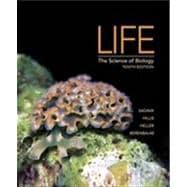• PEDAGOGICALLY, with features that match the way students learn today, including chapter opening stories, art with balloon captions, and new Learning Objectives
• SCIENTIFICALLY, with a wealth of important new research throughout (see Table of Contents for highlights)
• TECHNOLOGICALLY, with instant access QR codes printed in the text, new interactive features (media clips, chapter summaries, a flashcard app), and a dramatically enhanced BioPortal, with the adaptive quizzing system, LearningCurve
• QUANTIFIABLY, with completely revised assessment resources and new ways of measuring students' progress
Also avalable, Volume Splits:—paperbound in full color!
Volume 1: The Cell and Heredity (Chapters 1-20)
Volume 2: Evolution, Diversity, and Ecology (Chapters 1, 21-33, 54-59)
Volume 3: Plants and Animals (Chapters 1, 34-53)
See what's in the LaunchPad








